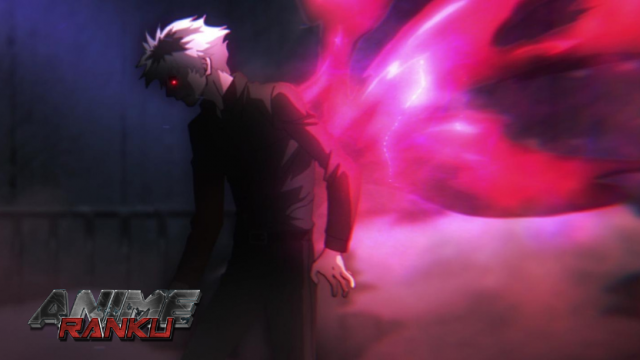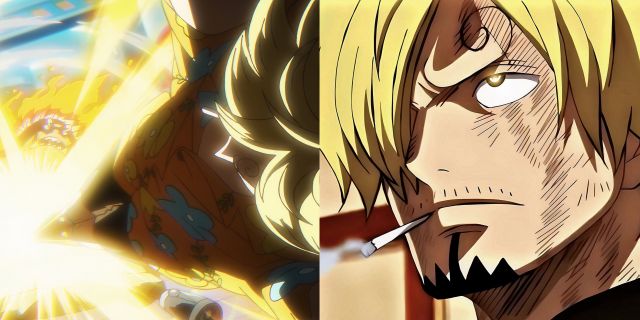In Tokyo Ghoul, human-like, flesh-eating creatures known as ghouls prowl Japan’s capital city looking for human flesh to eat. Ghouls are common in other forms of supernatural media, but the ones in Sui Ishida’s manga/anime series stand out in particular for the strange structures that protrude from their bodies.
The ghouls use these structures to create kagune, or bioweapons, to battle and slay their human prey. While all kagune are in some way similar to weapons, there are four main varieties found in Tokyo Ghoul. Here is all there is to know about kagune and their capabilities.
The Role of Rc Cells In Forming Tokyo Ghoul’s Kagune

A kagune is a biological weapon that emerges from a ghoul’s body and can be used both offensively and defensively to combat foes. However, from where does this weapon come? Every ghoul has an internal organ that resembles a sac called a kakuhou. The kakuhou contains a large number of Red Children cells (Rc cells), much like the stomach does in humans before food is digested. These Rc cells, which make up the kagune, are in charge of giving it its elastic and liquid-like qualities, which enable it to quickly extend over great distances while retaining its firm and powerful muscle-like characteristics. Because of this, the term “Liquid Muscle” was coined. Although there aren’t many Rc cells in humans, there are 10 to 15 times more Rc cells in ghouls.
When ghouls eat humans or other ghouls, they collect more Rc cells, which causes the kagune to grow stronger and larger. A ghoul can develop into the extremely rare type known as a kakuja when it has consumed too many other ghouls and humans. Their entire body is covered in kagune after the transformation. However, if for some reason the transformation is not complete, the ghoul is referred to as a half-kakuja. In some cases, such as in the case of series protagonist Ken Kaneki, a human can gradually transform into a ghoul by having surgery to raise their Rc cell level to that of a ghoul.
Humans, in a bid to protect themselves, battle ghouls with artificial bioweapons of their own called quinque. Quinque were created from the kagune of captured ghouls, and are the only effective means of killing a ghoul.
Ghouls Choose the Design of Their Kagune

A kagune can take on any shape the ghoul desires, depending on the ghoul’s mind. The stronger a ghoul’s kagune develops, the more likely they are to win a fight, while ghouls with weakly developed kagune may lose or even die. A ghoul becomes even more dangerous when it transforms into a kakuja, while chimeras of the species with hybrid kagune are stronger than regular ghouls. For example, the One-Eyed Owl, the leader of the Aogiri organization, was a kakuja, making him a very difficult threat to deal with.
Kaneki, meanwhile, always proved to be a difficult ghoul to take on due to his constantly evolving kagune, and he only became even deadlier after becoming a dragon kakuja. This brings us neatly onto the different abilities ghouls can unlock based on the type of kagune they possess.
Understanding the Various Kagune Types of Tokyo Ghoul

There are four main types of kagune in the Tokyo Ghoul franchise: Rinkaku, Koukaku, Ukaku and Bikaku. Each kagune grows from a specific point on the body and operates as a weapon. Some are effective for medium to long-ranged attacks, while others are dangerous up close.
Sharp objects are Formed by the Tentacle-like Rinkaku for Stabbing
The rinkaku is a tentacle-like kagune that extends from the back of a ghoul. These structures can be used to form a sharp shape to stab opponents with if the user so desires. Kaneki has a rinkaku kagune, which evolved from Rize — the ghoul he got his powers from. This kagune can form claw-like hands that could be used for nimble climbing. The colour of rinkaki kagune varies depending on the gene type and Rc cell type of the ghoul.
When Attacking, the Sword-Shaped Koukaku Extends
This type of kagune extends from the upper back region of the ghoul to form a sharp, sword-like shape. It is mainly used for attacking as it extends from the shoulder to cloak the arms before further extending into a sword. For this reason, it’s also known as the sword kagun, and a high-class one at that with very high attacking capabilities.
Forming a Wing-like Shield and a Projectile Shooter, the Ukaku
Ukaku, like rinkaku, takes on the shape of a wing and develops from the back. This kagune can shield its user from attacks by covering them. It does, however, have a lot of bite, with the ability to shoot small sharp objects at opponents as a long-range attack. In the series, Ayato and Touka Kirishima have been seen using this kagune effectively.
Bikaku Are Short-Range Attack Tails
This kagune is distinct in that it grows as a tail from the ghoul’s lower back. Because of its short length, it isn’t ideal for long-range attacks like the ukaku, but it does provide adequate medium-range attacks and can be used as an unexpected surprise weapon in many situations. While most ghouls can only produce one Bikaku tail, there have been a few instances where multiple tails have been produced. Nishio Nishiki used his bikaku kagune against Kaneki, and he usually keeps this trump card hidden away until it’s time to use it.











Leave a Reply